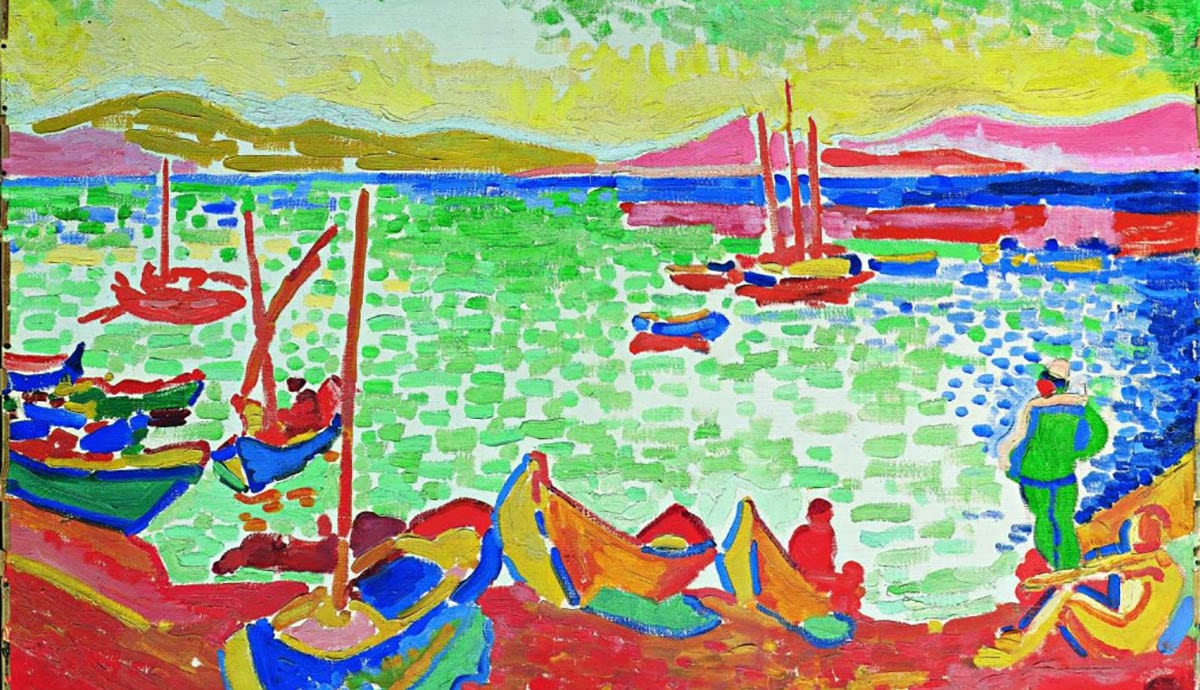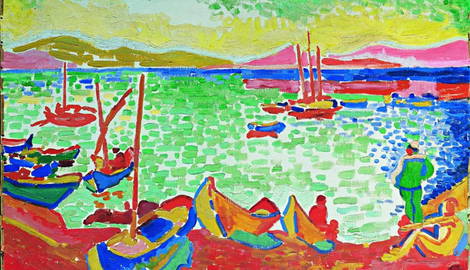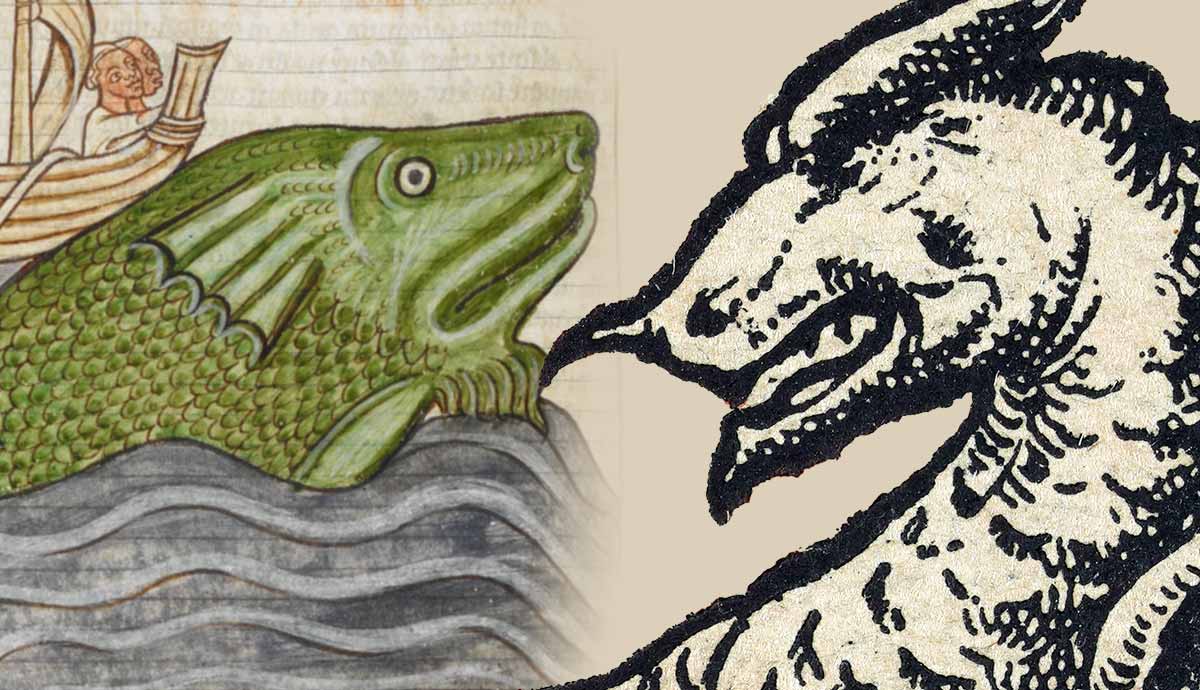
Fauvism was the first modern art movement of the 20th century, focusing on the use of vivid colors and rough, abrupt brushstrokes. The group of French artists who comprised the movement called themselves the Fauves, or ‘wild beasts,’ in response to a comment about their work by an art critic. Below are 11 famous paintings of Fauvism, the movement that set the stage for 20th-century modernism.
Quick Facts About Fauvism
| Date | c. 1900-1908 |
| Name Origin | Fauvism derives its name from the French word fauves (“wild beasts”) used by critic Louis Vauxcelles. |
| Style | Bold colors, uneven brush strokes to create intense, expressive, and vibrant works. The focus is on the emotional expression rather than naturalistic representation. |
| Influences | Post-impressionist approaches of Vincent van Gogh, Paul Cézanne, and Paul Gauguin. |
| Related Artists | Henri Matisse, Georges Rouault, Maurice de Vlaminck, André Derain, Georges Braque, Raoul Dufy, Othon Friesz. |
What Is Fauvism?

Fauvism was inspired by post-impressionist artists such as Vincent van Gogh, Paul Cézanne, and Paul Gauguin. The thick paint application, bold hues, and expressive nature of post-impressionism were exemplified and emphasized in Fauvist painting. The group of artists first exhibited together at the Paris Salon d’Automne in 1905, after which they earned their name as Fauves (wild beasts).
This first period saw the expansion of Fauvist elements, including vibrant colors, nonlinear perspectives, and increasingly abrupt and disjointed brushwork. French painter Henri Matisse immediately emerged as the leading figure of Fauvism, rejecting the traditional rendition of three-dimensional spaces to convey movement through brisk strokes of color.

As Fauvism progressed, its works began to incorporate sharper, more angular edges and defined outlines as it transitioned into early Cubism. It was also characteristically more demonstrative than its Impressionist predecessors, focusing on expression rather than aesthetic representation.
1. Woman with a Hat (1905) by Henri Matisse

French painter, draughtsman, and sculptor Henri Matisse met many other artists and produced numerous masterpieces between 1900 and 1910, although he continued to paint for nearly 50 years after the movement. His expressive use of color and emotion in painting gained critical acclaim, and his work is considered extremely influential to 20th-century art.
Woman with a Hat depicts Matisse’s wife, Amélie. The piece features several elements typical of French bourgeoisie culture; Amélie wears a colorful dress with an elaborate hat atop her head, and she holds a fan in her gloved hand.
The painting marked a stylistic shift in the artist’s work from the more naturalistic colors of Impressionism into the bold, contrasting hues of Fauvism. The brushstrokes are also markedly more rugged than his previous works, adding to the ‘wild’ aspect of the work and shocking viewers.
2. Jeu de Massacre (Game of Carnage; 1905) by Georges Rouault

Georges Rouault was a French painter, print artist, and draughtsman who was known for his combination of Fauvist and expressionist elements. While studying at the École des Arts Décoratifs, he became the apprentice of a stained-glass maker, leading to an interest in stained-glass artisanship. He was also inspired by French medieval art and produced numerous pieces with the same spiritual resonance. His work was characterized by bold primary colors, powerful symbolism, and sharp brushstrokes.
Jeu de Massacre portrays the traditional ‘Aunt Sally’ pub game in which the players throw items at a model old woman’s head. The painting displays the bleak anonymity of French bourgeoisie culture as none of the figures have any distinguishable qualities. It has tense energy, with chaotic brushstrokes and dim hues. The focus appears to be on the entertainer at the forefront of the piece, who features a contrasting red hue to the darker background figures.
3. Open Window, Collioure (1905) by Henri Matisse

Matisse produced Open Window, Collioure while he and fellow Fauvist painter André Derain were working together in a seaside town near the Spanish border. The painting depicts a view out the window of the town of Collioure, and the viewer can see the sea and boats in the distance.
The piece is richly colored, with bright, blended, and contrasting hues that give it an unrealistic quality. It also features rough, uneven brushstrokes, yielding an unfinished and casual nature. These elements received significant criticism at the Paris Salon d’Automne as they were not the traditional representations the institution had expected. Matisse’s use of bright, non-realistic colors and “crude” brushstrokes led critics to dub him (as well as his fellow artists) as “wild beasts” (fauves).
4. The Joy of Life (Bonheur de Vivre; 1906) by Henri Matisse

The Joy of Life represents a series of motifs that together form a summer landscape scene. There are a variety of influences at play; Japanese prints, Neoclassical art, Persian miniatures, and the southern French countryside are all present in the piece.
The bright coloration is typical of Fauvist work at the time, and the hues blend to give the painting an almost surreal, dreamlike quality. The figures appear disjointed but exist amongst one another in harmony.
While the subject of a sensual Arcadia had long been a standard throughout the centuries, Matisse’s novel execution shocked viewers. According to Gertrude Stein, the eccentric American writer whose Paris salon attracted the leading artists and writers of the time, remarked: “Matisse painted Le Bonheur de vivre and created a new formula for color that would leave its mark on every painter of the period.”
5. The River Seine at Chatou (1906) by Maurice de Vlaminck

Maurice de Vlaminck was a French painter and a leading artist in the Fauvism movement along with Henri Matisse and André Derain. His work was known for its thick, square brushstrokes, which gave the work an almost shutter-like quality. He took significant inspiration from the works of Vincent van Gogh, as evidenced by his heavy paint application and color blending.
The River Seine at Chatou reflects a time when Vlaminck lived in Chatou, France, with André Derain in a studio apartment. During this period, Derain and Vlaminck founded what is now called the ‘School of Chatou,’ which exemplified the characteristic Fauve painting style. The piece’s point of view looks across the river upon the red-roofed houses of Chatou, with the focal point being the river and boats on it. The trees to the left of the piece are brightly colored in pink and red, and the entire scene has a rich feel to it, with clear links to van Gogh’s painting.
6. Charing Cross Bridge, London (1906) by André Derain

André Derain was a French painter who, with Henri Matisse, utilized bright and often unrealistic color combinations to produce vibrant, characteristic Fauvist works.
Derain met Matisse at a class held by the well-known Symbolist painter Eugène Carrière. The pair were known for their color experimentation and landscape scenes. Derain was also later associated with the Cubism movement.
Charing Cross Bridge, London was inspired by a trip that Derain took to London, yielding several masterpieces and featuring similar subjects to Claude Monet’s visit several years prior. The piece exemplifies typical early characteristics of Fauvism, including small, disjointed brushstrokes and an unblended quality. The hues are also notably unrealistic, displaying the Fauvist focus on bright color play in art.
7. House Behind Trees (1906-07) by Georges Braque

Georges Braque was a leading French painter, draughtsman, sculptor, and collagist associated with the Fauvism movement. He also later played an important role in the formation of Cubism, and his work has been linked with fellow Cubist artist Pablo Picasso. He experimented with landscapes and still lifes through different perspectives, and his work was known for its unique uses of texture and color.
House Behind Trees is an example of Braque’s landscape scene art in the Fauvist style. Painted near the town of L’Estaque in southern France, the piece depicts a house behind trees and a rolling landscape.
The painting features bright, unblended colors and thick, prominent outlines, all typical in Fauvist art. Its brushstrokes are notably rugged with thinly layered paint application, giving a lack of depth perspective to the piece.
8. Landscape Near Cassis (Pinède à Cassis; 1907) by André Derain

Derain’s painting depicts a scene near Cassis, in the south of France. Derain had spent summers there with Henri Matisse, and during these trips, the pair created numerous masterpieces that varied in composition and technique.
The piece represents a stylistic blend between Fauvism and Cubism, incorporating bright colors with sharp angles and object definition, which adds severity to the piece. In this sense, the painting foreshadows Derain’s break from Fauvism that would take place the following year, 1908. For the next few years, the artist adopted a stylized form of Cubism, but his later works became increasingly Neoclassical in style.
9. The Regatta (1908-10) by Raoul Dufy

Raoul Dufy was a French artist and designer who was influenced by Impressionism and associated with Fauvism. Dufy was very thoughtful with his use of color and how blending them affected the balance of an artwork.
He learned about this use of color from both Claude Monet and Henri Matisse and applied it to his urban and rural landscape pieces. His pieces were characteristically light and airy, with thin but prominent linework.
The Regatta is a classic example of Dufy’s depictions of leisure activities in his work. The artist grew up on France’s Channel coast and often painted pictures of maritime activities.
The scene represents spectators watching a rowing race. It features a heavy paint application with blended colors, thick brushstrokes, and bold outlines. The style of the painting was inspired by Henri Matisse’s Luxe, Calme et Volupté (1905), which exemplified the characteristic coloration of Fauvism.
10. Landscape with Figures (1909) by Othon Friesz

Achille-Émile Othon Friesz, known as Othon Friesz, was a French artist associated with Fauvism. He met fellow Fauvists Georges Braque and Raoul Dufy at the École des Beaux-Arts in his hometown of Le Havre. His style changed throughout his career, beginning with softer brushstrokes and more muted colors and evolving into more abrupt strokes with bolder, more vibrant colors. He also befriended Henri Matisse and Camille Pissarro, from whom he later took influence.
Landscape with Figures represents a scene with nude female figures who appear to be relaxing by the water. The painting exemplifies Friesz’s more severe painting style, with bold outlines and more defined brushstrokes, which display the influence of Cubism. This is juxtaposed by the unblended, rough nature of the piece and slightly abstracted elements that belong to the typical Fauvist style.
11. Dance (1910) by Henri Matisse

Dance has been remembered as a significant piece for both Matisse’s career and as a turning point in the development of 20th-century art. It was originally commissioned by Russian art patron and businessman Sergei Shchukin.
It is a set of two paintings, one completed in 1909 and the other in 1910. The painting is simplistic in composition, focusing on color, form, and linework rather than landscape. Like in his other works, Matisse used bold, non-realist colors (reddish-pink for the bodies, green for the ground, and blue for the sky).
The lack of depth due to the flat, bold colors sends a strong message of human connection and physical abandonment, rather than focusing on aesthetics, like many of its predecessors.










